It was like going back in time when I landed at the Siem Reap airport, a small charming gateway to the world famous Angkor temples, in Cambodia. It took all of ten minutes to get my visa on arrival at the Siem Reap airport for US$25 and the hotel car was waiting for me outside. A short ride through dusty streets reminiscent of India 30 years ago. Soon the road was lined with huge hotels on either side and one of them was my destination, the Sokha Angkor Resort.
I was very excited at finally being here in Siem Reap and looking forward to Angkor Vat. A 3 day pass was available at the hotel guest desk for US$ 40 which allowed access to all historic places in the Ankor wat complex, and its visiting hours are 5am to 6pm . We planned to get there in the afternoon when it was cooler, so we decided to visit the Silk Worm Farm managed by Artisans D’Angkor. More about the visit to the Silk farm here >>
Then finally to the main attraction – Angkor Vat. The name means “City Temple”- Angkor is a vernacular form of the word nokor which comes from the Sanskrit word ‘nagara’ (capital), while Wat is the Khmer word for temple.
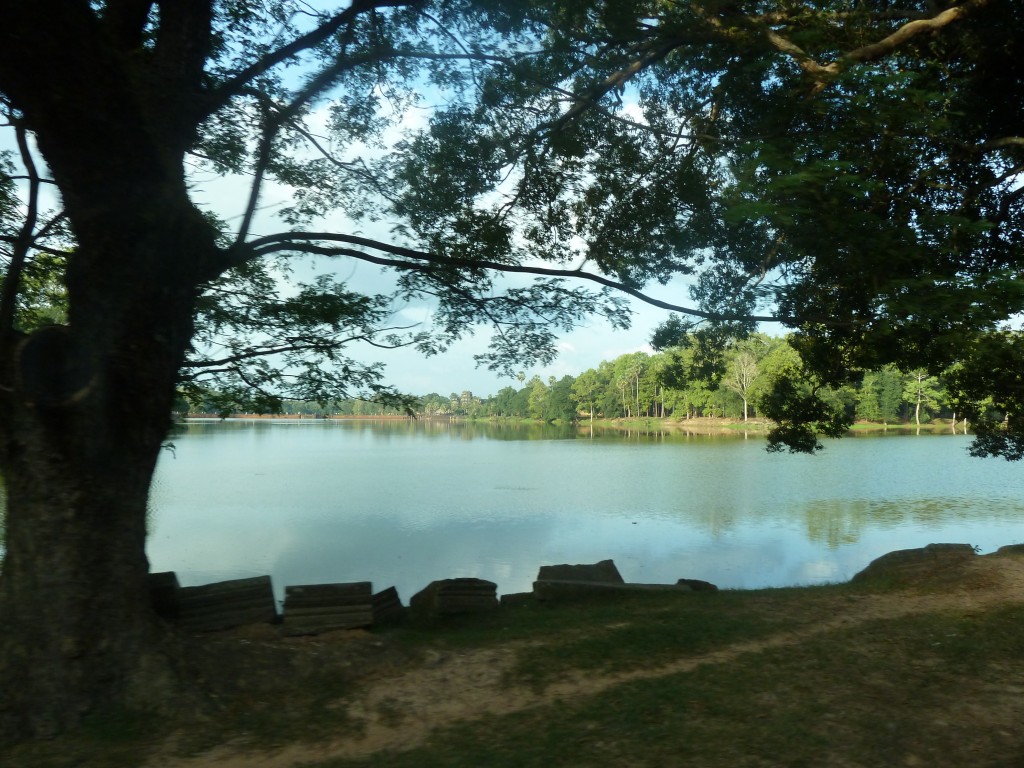 The approach road to Angkor Vat was lined with large shady trees and led to a large man made lake or moat which surrounds the temple complex. This must have provided some protection from encroachment by the jungle. The huge imposing, symmetrical sturcture in stone was very impressive. A very solid presence which transcended time – a doorway to the past.
The approach road to Angkor Vat was lined with large shady trees and led to a large man made lake or moat which surrounds the temple complex. This must have provided some protection from encroachment by the jungle. The huge imposing, symmetrical sturcture in stone was very impressive. A very solid presence which transcended time – a doorway to the past.
Background: Angkor Vat was built for King Suryavayrman II in the early 12th century, dedicated to Lord Vishnu. The temple is built in high classical style of Khmer architecture and now part of the national flag. The architechtural design represents Mount Meru, abode of Hindu Gods. Surrounded by a moat is an outer wall of 3.6 km, it comprises of three rectangular galleries, each raised above the next. The massive three-tiered pyramid is crowned by five lotus-like towers rising 65 meters from ground level, to form a quincunx (a geometric pattern consisting of five coplanar points,four of them forming a square or rectangle and a fifth at its center).
As we walked in through the main entrance, it looked like a giant postcard photo against the sky. The complex details became clearer as we moved forward and the visual impact was stunning. There was so much to see and take in at once.
The walls are adorned with extensive bas-reliefs depicting scenes from Hindu mythology. As we walked counterclockwise around the temple, the stories of the mythological Battle of Kuru on the west wall; the historical march of the army of Suryavarman II, builder of Angkor Wat, against the Cham, followed by scenes from Heaven and Hell on the south wall; and the classic ‘Churning of the Ocean Milk’ on the east wall. Beautiful apsaras adorned the walls throughout the temple. Large stone idols which were obviously Vishnu are now dressed in saffron cloth and venerated as Buddha. After all, all paths (or idols, in this case) lead to the same God.
The central coutyard has 4 pools within the cloister which is fringed by long pillared galleries. This is the ‘Gallery of a Thousand Buddhas‘ (Preah Pean). As the name suggests, it housed hundreds of Buddha images, of which only few remain. The pools are no longer filled with water and are great for photo sessions. Standing within the cloister is a great experience – a haven of cool and quiet, in contrast to the brigh direct sun outside.
The third level is accessed through very steep and high stairs and many have been closed for safety reasons. An alternate wooden stairway has been made to provide access. Cambodian dancers in full costume with the temple as the backdrop was a beautiful sight and a great photo opportunity.
- Posing with the Dancers
The temple is a photographers paradise from long before sunrise till after sunset. Artists had set up their easels to capture the beauty through paint.
What to Bring: Wear light, airy, clothing with full sleeves to protect yourself from the sun and mosquitoes. The sun can be intense so do bring a hat, sunglasses and even sunscreen. Always carry your water and maybe a snack. You should have mosquito repellent for sunrise and sunset hours. Wear practical shoes for climbing narrow steps and walking on uneven surfaces. For serious temple explorers, a flashlight, notebook and compass can come in handy. Food, Trinkets, postcards and film are available from small vendors outside the temple complex.
Top spots: If you have limited time the two top temples to visit are Angkor Wat and Bayon.
Some more photographs from the visit

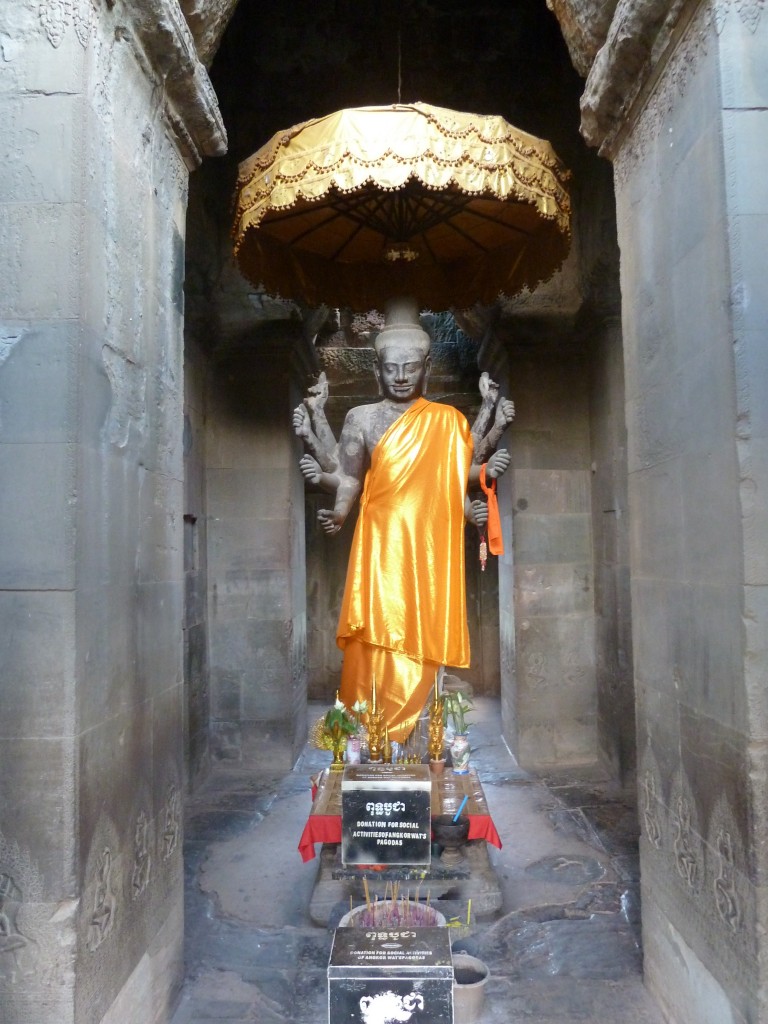
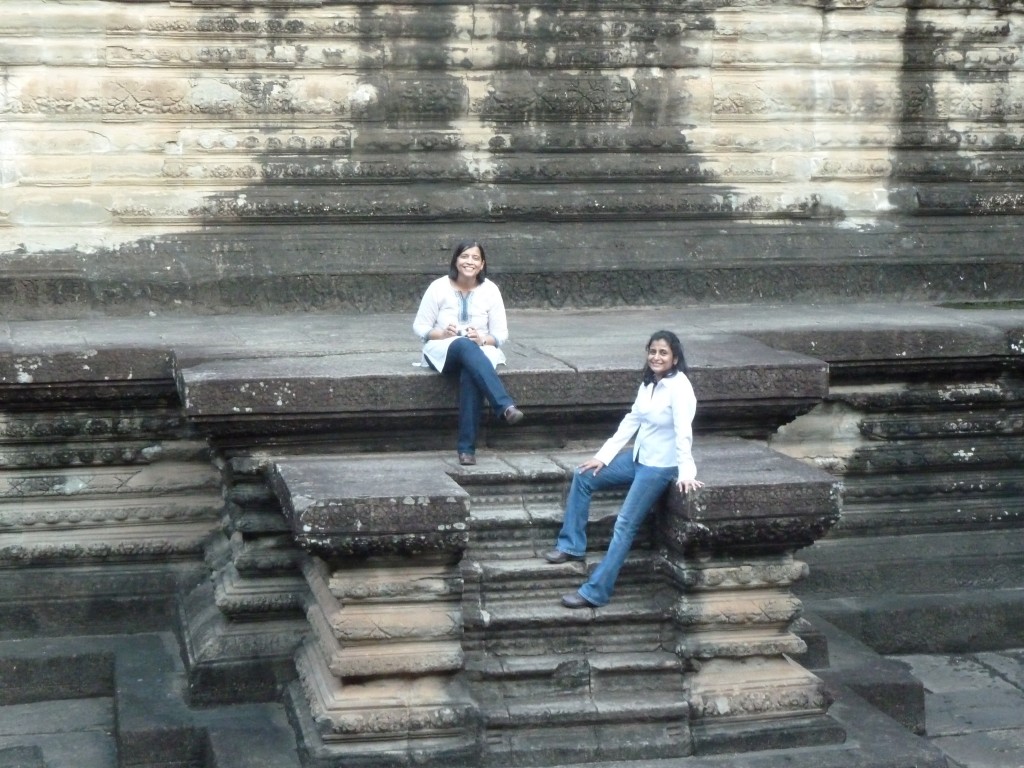
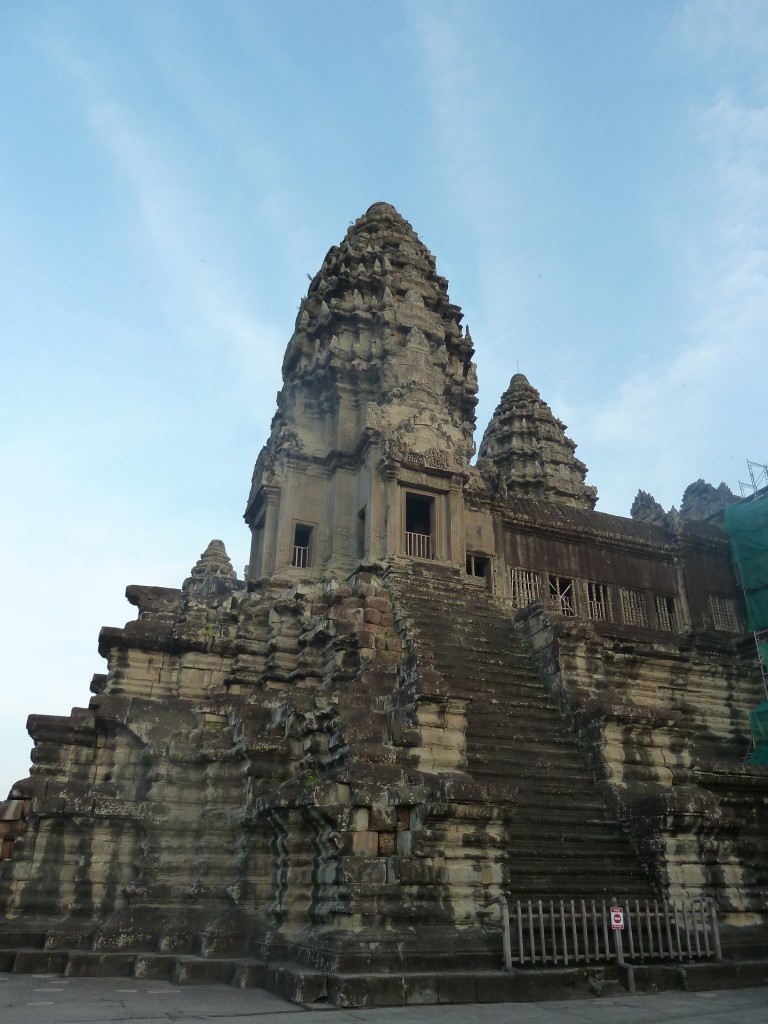
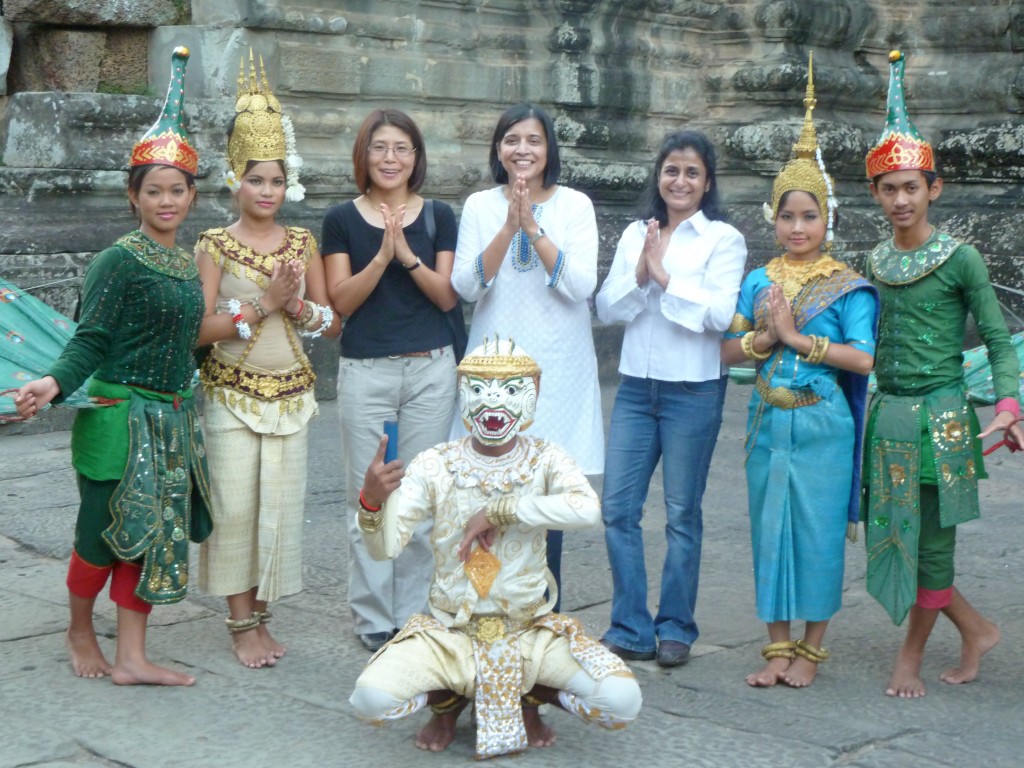
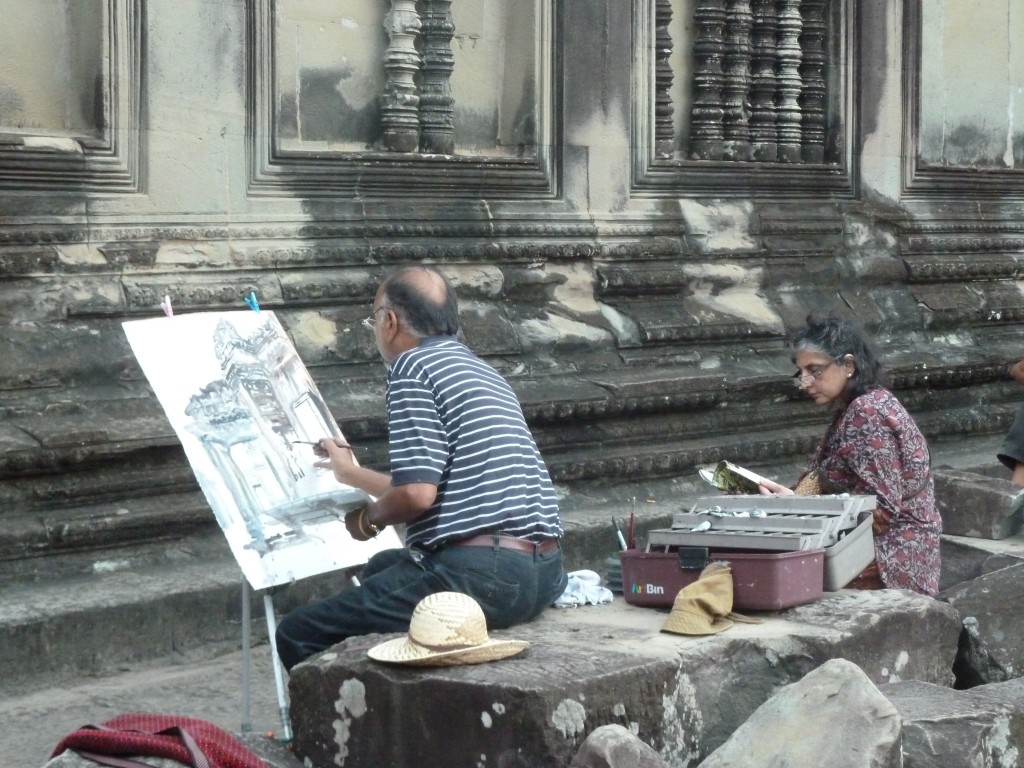
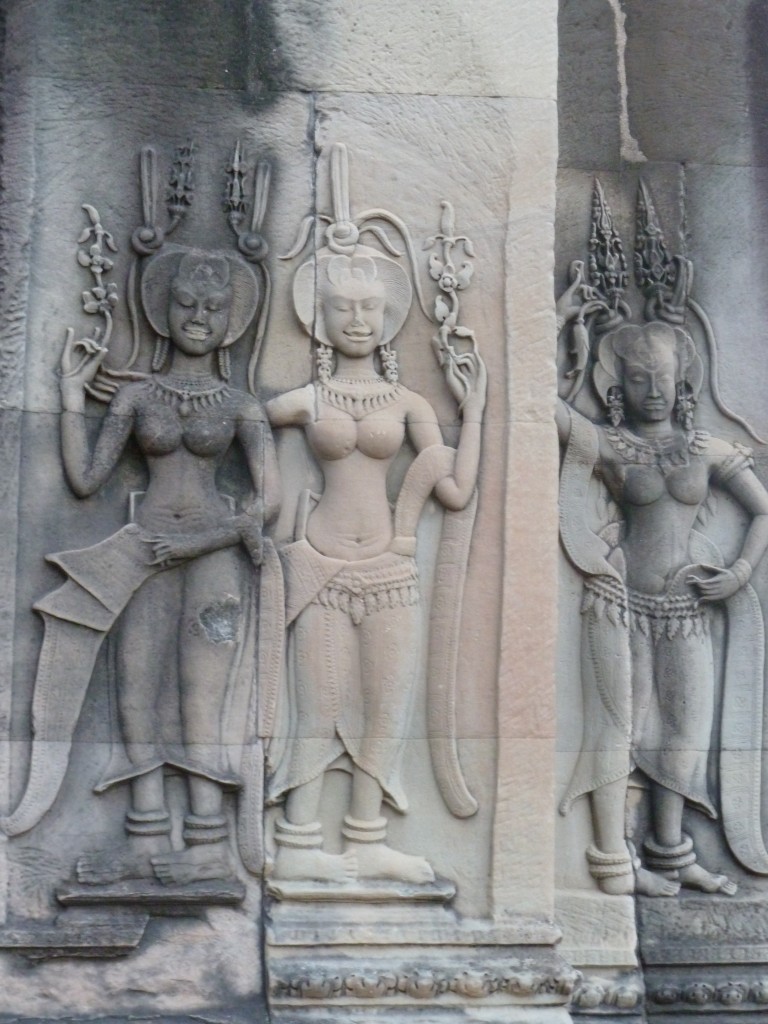
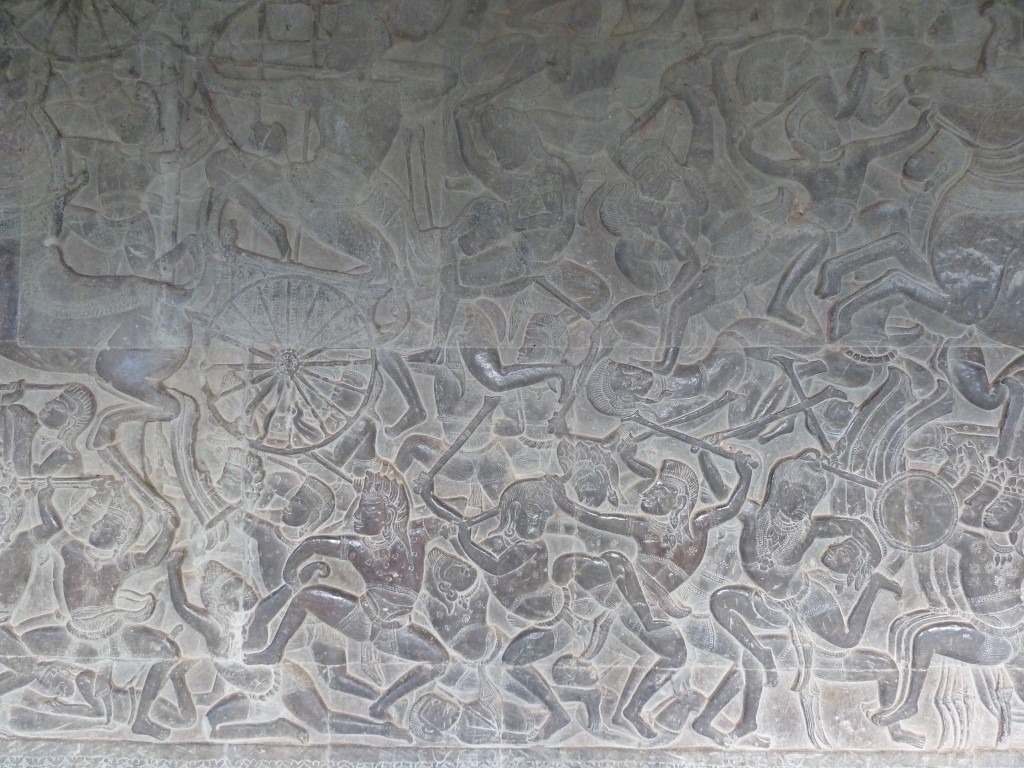
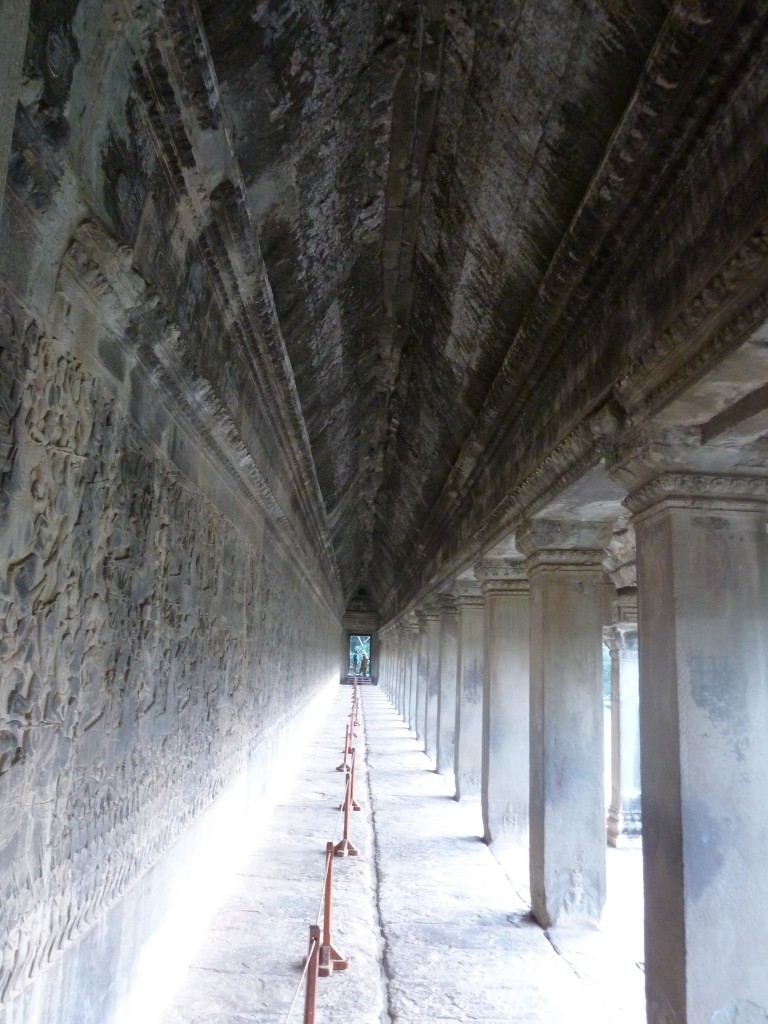
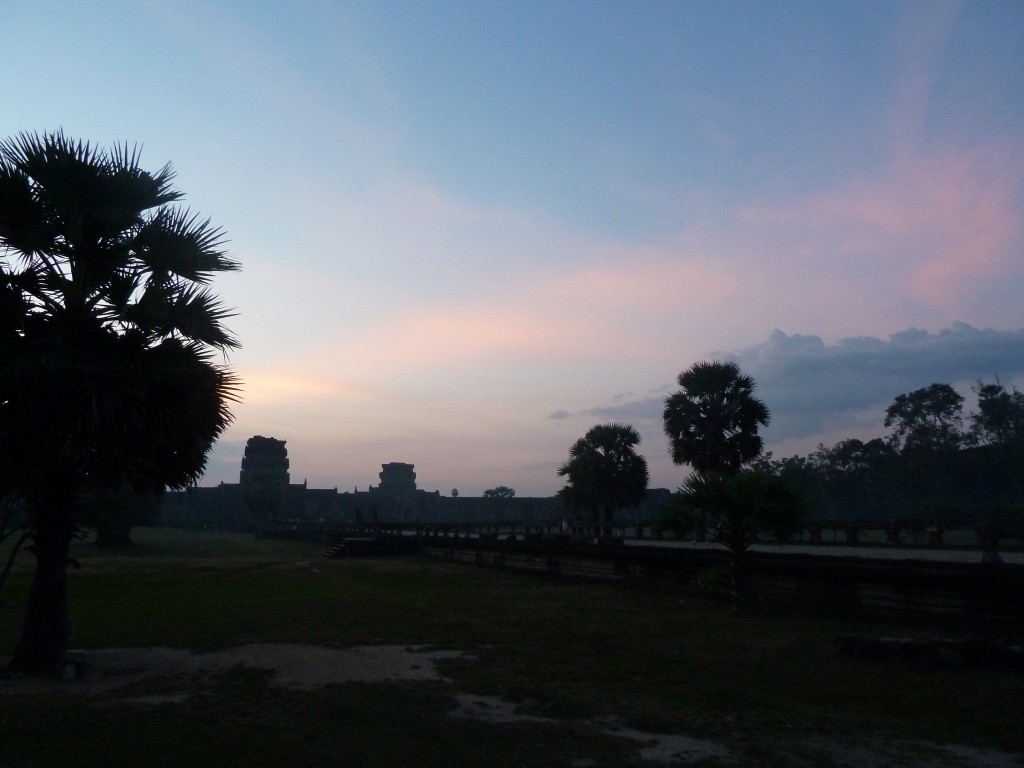



I loved the description of Angkor Vat. Now I want to plan a trip there soon:) The article is complete with pictures and makes one feel like they travelled to Angkor Vat themselves. Very well written indeed!
Thank you Aditi. It is a fabulous destination and I also enjoyed the fresh and flavorful food available at rock bottom prices. I recommend ‘Amok’ – a very light fish curry served in a fresh green coconut. Yumm…